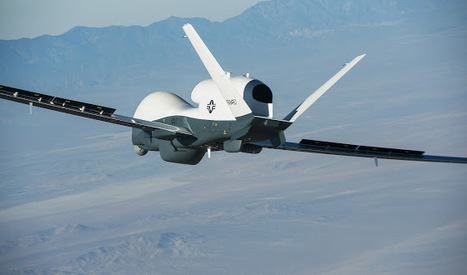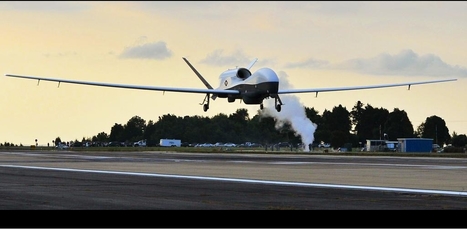NAVAL AIR STATION PATUXENT RIVER, Maryland, Sept 23 (Reuters) - I mproved reliability of Northrop Grumman Corp's unmanned MQ-4C Triton spy plane means the U.S. Navy may buy fewer of the drones than the 68 it now has on order, a senior navy official said on Tuesday, a move which may result in lower revenues for the planemaker.
The Navy's goal is to have 20 of the huge drones available at any given time to use for five continuous "orbits" of maritime surveillance. It takes four planes to make up one orbit.
Rising reliability rates mean the Navy may not need as many of the high-altitude aircraft as first thought, said Captain Jim Hoke, who runs the Triton program for the Navy.
Northrop had no immediate comment on the matter.
Hoke said he was mindful of tough budget pressures facing the Navy and also had a team looking for other ways to reduce the cost of building and operating the Triton unmanned system.
The overall development program is slated to cost about $3 billion, Hoke said. The plane's design was based on the unmanned Global Hawk plane that Northrop builds for the Air Force, but the two planes have only about 20-30 percent in common, Hoke said.
The Navy aims to start early operational use of two Triton aircraft by the end of 2017, with the formal "initial operational capability" to follow about six months later when two additional aircraft are delivered. The date slipped due to budget cuts that slowed Northrop's production, Hoke said.
Each aircraft now costs about $100 million, but Hoke said the Navy hoped to drive the cost down by finding more efficient ways to build the planes in coming years.
Hoke said all new weapons programs were vulnerable during lean budget times, but demand for maritime surveillance remained strong. He said the BAMS-D demonstration aircraft that preceded Triton has been used in the Middle East for six years.
The Navy expects to award Northrop a small contract to buy certain components for the first low-production aircraft once the fiscal 2015 budget is approved, Hoke said. He said the number of aircraft in that first batch of orders would be determined as part of the fiscal 2016 budget deliberations.
The first of three Triton planes arrived at the base in southern Maryland on Thursday after completing its longest flight ever, a 3,000-mile, 11-hour journey from California.
Hoke said two more aircraft would arrive at the base in coming weeks. The planes are due to conduct about 2,000 hours of flight testing before it enters service in 2017. The second plane will have its first flight in California this week, Hoke said.
Hoke said he hoped to resume work on an Exelis Inc system that will allow the airplane to "sense and avoid" other aircraft before the end of the year, when he is due to retire.
The Navy halted work on the system last year after running into technical issues, and has been working closely with prime contractor Northrop to find a way to fix the problem.
Northrop's deputy Triton program manager Tim Kesecker said the company had pulled in experts from other divisions, and he was upbeat that agreement would be reached soon.



 Your new post is loading...
Your new post is loading...









